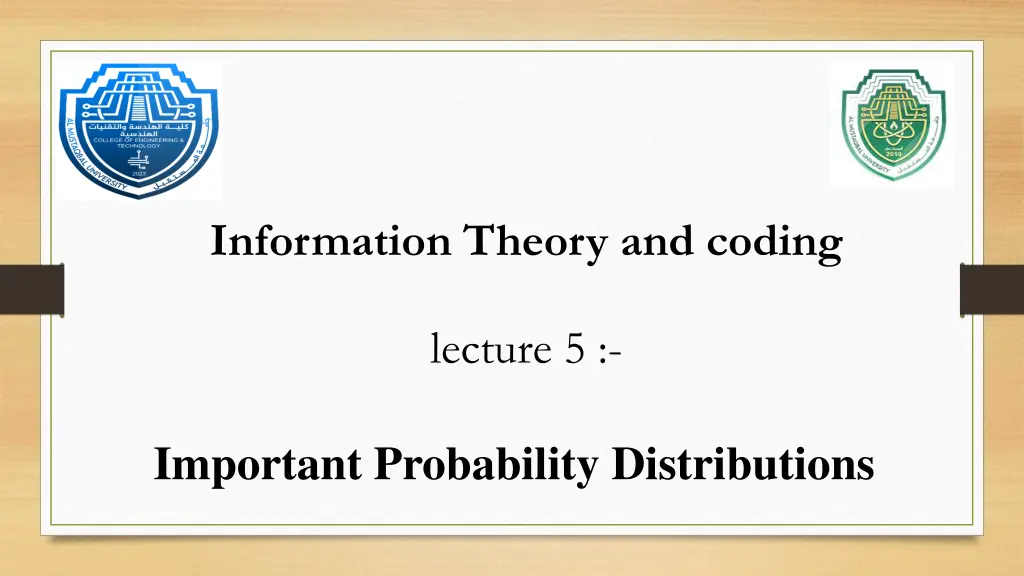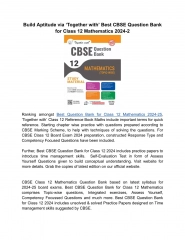
Probability Distributions in Information Theory and Coding
Explore important probability distributions such as the uniform distribution and binomial distribution in Information Theory and Coding lecture 5. Understand concepts like the uniform random variable and repeated Bernoulli trials through examples and calculations. Dive into calculating probabilities in scenarios like tossing a fair die multiple times.
Download Presentation

Please find below an Image/Link to download the presentation.
The content on the website is provided AS IS for your information and personal use only. It may not be sold, licensed, or shared on other websites without obtaining consent from the author. If you encounter any issues during the download, it is possible that the publisher has removed the file from their server.
You are allowed to download the files provided on this website for personal or commercial use, subject to the condition that they are used lawfully. All files are the property of their respective owners.
The content on the website is provided AS IS for your information and personal use only. It may not be sold, licensed, or shared on other websites without obtaining consent from the author.
E N D
Presentation Transcript
Information Theory and coding lecture 5 :- Important Probability Distributions
Uniform Distribution In uniform random variable the pdf f(x) is constant for the whole range of the continues random variable x. In general, the pdf is given by: An example of uniform source is the random binary source that has the probability of binary 0 identical to the probability of binary 1 .
Binomial Distribution (or Repeated Bernoulli Trials) This is an example of discrete random variable. Any experiment with two outcomes only and repeated n times can be considered as Binomial distribution. Let the two outcomes called the Success event with probability of Ps and the Failure event with probability of PF. Clearly: Ps = The probability of the success event in single trial and (Ps+ PF) =1. Define the random variable of the binomial distribution as (k), where : k= Number of times that the success event occurred out of n trials
Binomial Distribution (or Repeated Bernoulli Trials) Define the random variable of the binomial distribution as (k), where : k= Number of times that the success event occurred out of n trials
Example Q/Consider an experiment of tossing fair die for 8 times, then find the probability of: a) Exactly 4 times the outcome 3 occurred. b) The outcome 5 occurred at least 6 times c) An odd number occurred at most 7 times d) No odd occurred






















